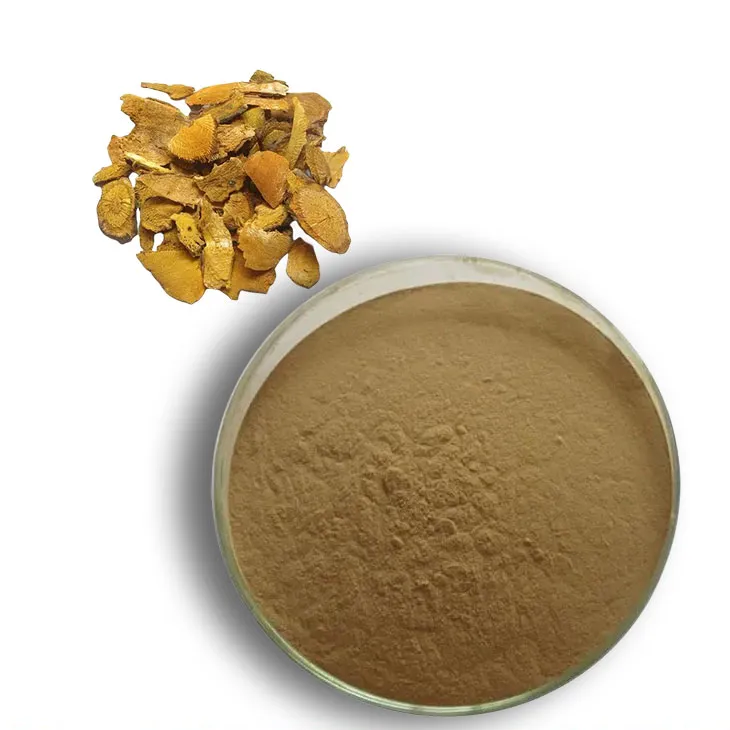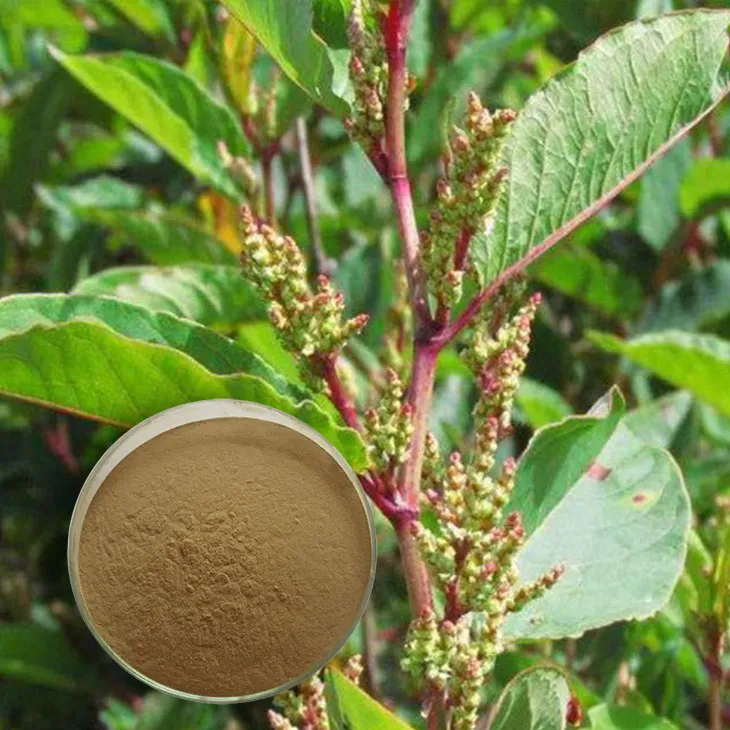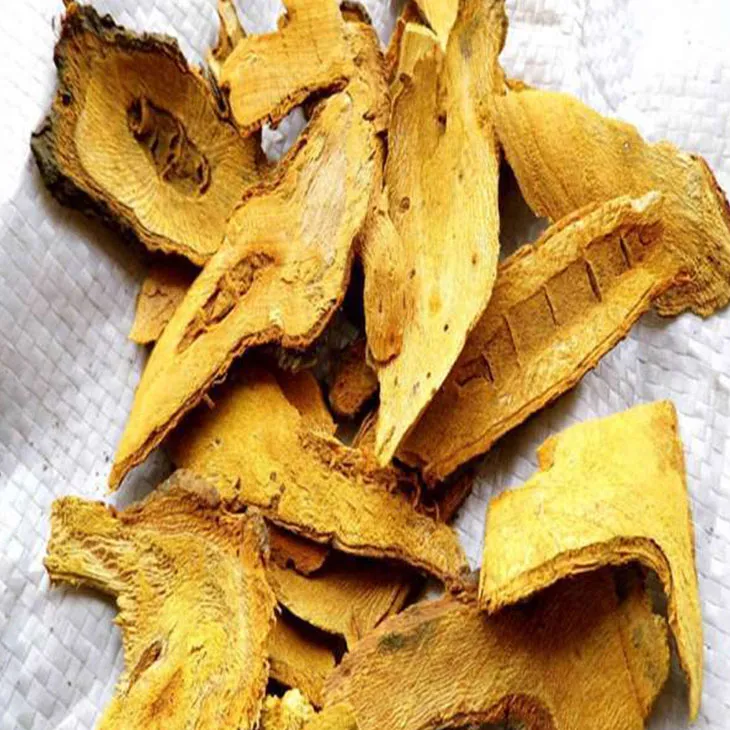- 0086-571-85302990
- sales@greenskybio.com
Extraction Technology and Production Process of Polygonum Cuspidatum Extract.
2024-11-30

1. Introduction
Polygonum cuspidatum, also known as Japanese knotweed, is a plant rich in various bioactive components. The extract of Polygonum cuspidatum has shown great potential in many fields, such as medicine, cosmetics, and food. Understanding the extraction technology and production process is crucial for the efficient utilization of this valuable plant resource.

2. Solvent Extraction
2.1 Raw Material Selection
The quality of raw materials is the foundation of the extraction process. Polygonum cuspidatum should be carefully selected. It is important to choose plants that are free from diseases, pests, and pollution. The maturity of the plants also affects the content of active ingredients. Usually, plants at an appropriate growth stage are preferred.
2.2 Pretreatment
Before extraction, the raw materials need to be pretreated. This includes cleaning to remove dirt, debris, and other impurities. Then, the plants are usually dried. Drying can be carried out in natural conditions or by using drying equipment. After drying, the plants are crushed into a suitable particle size. Crushing helps to increase the contact area between the raw materials and the solvent, which is beneficial for the extraction process.
2.3 Extraction Steps
- Select an appropriate solvent. Commonly used solvents for Polygonum Cuspidatum Extraction include ethanol, methanol, and water - ethanol mixtures. The choice of solvent depends on the solubility of the target components.
- Put the pretreated raw materials into the extraction vessel and add the solvent. The ratio of raw materials to solvent should be optimized according to the extraction requirements.
- Carry out extraction under appropriate conditions. This usually involves heating and stirring. The extraction time also needs to be controlled. Longer extraction time may increase the extraction rate, but it may also introduce more impurities.
2.4 Purification
After extraction, the extract contains not only the target components but also some impurities. Purification is necessary to obtain high - quality Polygonum Cuspidatum Extract. Methods such as filtration, centrifugation, and chromatography can be used for purification. Filtration can remove large - particle impurities, while centrifugation is more effective for separating fine particles. Chromatography can further separate and purify the target components based on their different affinities to the stationary and mobile phases.
2.5 Quality Control
Quality control is an important part of the solvent extraction process of Polygonum Cuspidatum Extract. This includes testing the content of active ingredients, such as resveratrol, which is one of the important bioactive components in Polygonum cuspidatum. Purity, solubility, and stability of the extract also need to be monitored. Any deviation from the quality standards should be corrected in time to ensure the quality of the final product.

3. Supercritical Fluid Extraction
3.1 Raw Material Selection and Pretreatment
The requirements for raw material selection in supercritical fluid extraction are similar to those in solvent extraction. High - quality Polygonum cuspidatum should be selected. Pretreatment also includes cleaning, drying, and crushing. However, in supercritical fluid extraction, the particle size of the crushed raw materials may need to be more uniform to ensure better extraction efficiency.
3.2 Supercritical Fluid and Equipment
- The most commonly used supercritical fluid in the extraction of Polygonum cuspidatum is carbon dioxide ($CO_2$). Carbon dioxide has the advantages of being non - toxic, non - flammable, and easy to obtain. It can reach a supercritical state under certain temperature and pressure conditions.
- Specialized extraction equipment is required for supercritical fluid extraction. The equipment should be able to accurately control the temperature, pressure, and flow rate of the supercritical fluid. This ensures the stability of the extraction process and the reproducibility of the results.
3.3 Extraction Steps
- Load the pretreated raw materials into the extraction vessel of the supercritical fluid extraction equipment.
- Adjust the temperature and pressure of the system to make carbon dioxide reach the supercritical state. In general, the critical temperature of carbon dioxide is about 31.1 °C, and the critical pressure is about 7.38 MPa.
- Allow the supercritical carbon dioxide to contact and extract the active components from the raw materials for a certain period of time. The extraction time depends on various factors, such as the nature of the raw materials and the target components.
- After extraction, the pressure is gradually reduced to separate the supercritical fluid from the extract. The extract is then collected.
3.4 Purification and Quality Control
Similar to solvent extraction, the extract obtained by supercritical fluid extraction also needs purification. Since supercritical fluid extraction can often obtain relatively pure extracts, the purification process may be relatively simple in some cases. However, quality control is still essential. The content of active ingredients, physical and chemical properties of the extract need to be tested and compared with the quality standards to ensure the quality of the final product.

4. Comparison between Solvent Extraction and Supercritical Fluid Extraction
- Solvent extraction is a more traditional method. It has the advantages of simple equipment and relatively low cost. However, it may use organic solvents that are harmful to the environment and human health, and the extraction efficiency may be relatively low in some cases.
- Supercritical fluid extraction is a more advanced method. It is environmentally friendly because it mainly uses carbon dioxide as the extraction medium. It can also obtain extracts with higher purity and better quality in a relatively short time. However, the equipment for supercritical fluid extraction is more complex and expensive.
5. Conclusion
The extraction technology and production process of Polygonum cuspidatum extract are important for the development and application of this plant resource. Solvent extraction and supercritical fluid extraction are two main extraction methods, each with its own advantages and disadvantages. In the actual production process, appropriate extraction methods should be selected according to the specific requirements, such as the quality of the final product, production cost, and environmental protection requirements. Continuous research and improvement of the extraction technology and production process will help to better utilize the value of Polygonum cuspidatum and promote its application in various fields.
FAQ:
What are the common solvents used in solvent extraction of Polygoni Cuspidati extract?
Common solvents used in solvent extraction of Polygoni Cuspidati extract include ethanol, methanol, and water - ethanol mixtures. Ethanol is often preferred due to its relatively good solubility for the active components in Polygoni Cuspidati, and it is also relatively safe and easy to handle. Methanol can also be used but requires more careful handling due to its toxicity. Water - ethanol mixtures can adjust the polarity of the solvent system to better extract different types of components.
How does supercritical fluid extraction work for Polygoni Cuspidati extract?
In supercritical fluid extraction of Polygoni Cuspidati extract, a supercritical fluid, usually carbon dioxide, is used. Supercritical carbon dioxide has properties between a gas and a liquid. It can penetrate into the plant material easily like a gas, and has good solvating power like a liquid. The process involves pressurizing and heating carbon dioxide to its supercritical state. Then, the supercritical carbon dioxide is passed through the raw material of Polygoni Cuspidati. The valuable components are dissolved in the supercritical fluid. By adjusting the pressure and temperature, the solubility of the components can be controlled, and finally, the components can be separated from the supercritical fluid when the pressure is released.
What are the key factors in raw material selection for Polygoni Cuspidati extract production?
The key factors in raw material selection for Polygoni Cuspidati extract production include the origin of the plant, its growth environment, and the time of harvest. The origin affects the genetic characteristics of Polygoni Cuspidati, which in turn influence the content and quality of the active components. The growth environment, such as soil quality, sunlight, and water availability, can also impact the chemical composition of the plant. The time of harvest is crucial as different growth stages may have different levels of active components. For example, plants harvested at the optimal maturity stage are more likely to contain higher amounts of the desired components.
How is purification carried out in the production process of Polygoni Cuspidati extract?
Purification in the production process of Polygoni Cuspidati extract can be achieved through several methods. One common method is chromatography, such as high - performance liquid chromatography (HPLC). HPLC can separate different components based on their different affinities to the stationary and mobile phases. Another method is crystallization, which is suitable for components that can form crystals. By carefully controlling the temperature, concentration, and other conditions, the target component can be crystallized out while impurities remain in the solution. Filtration can also be used to remove insoluble impurities during the purification process.
What are the main quality control parameters in the production of Polygoni Cuspidati extract?
The main quality control parameters in the production of Polygoni Cuspidati extract include the content of active components, purity, and safety. The content of active components such as resveratrol and polydatin should be determined accurately, usually by spectroscopic or chromatographic methods. Purity is evaluated to ensure that there are no excessive impurities, which may affect the efficacy and safety of the extract. Safety aspects involve testing for heavy metals, pesticides, and microbial contamination. For example, the levels of lead, mercury, and arsenic should be within the allowable limits, and the extract should be free from harmful microorganisms.
Related literature
- Advanced Extraction Technologies for Herbal Medicines"
- "Polygoni Cuspidati: Chemical Composition and Extraction Optimization"
- "Quality Control in Herbal Extract Production: A Case Study of Polygoni Cuspidati"
- ▶ Hesperidin
- ▶ citrus bioflavonoids
- ▶ plant extract
- ▶ lycopene
- ▶ Diosmin
- ▶ Grape seed extract
- ▶ Sea buckthorn Juice Powder
- ▶ Beetroot powder
- ▶ Hops Extract
- ▶ Artichoke Extract
- ▶ Reishi mushroom extract
- ▶ Astaxanthin
- ▶ Green Tea Extract
- ▶ Curcumin Extract
- ▶ Horse Chestnut Extract
- ▶ Other Problems
- ▶ Boswellia Serrata Extract
- ▶ Resveratrol Extract
- ▶ Marigold Extract
- ▶ Grape Leaf Extract
- ▶ blog3
- ▶ blog4
-
The Most Highly - Praised Seabuckthorn Oil.
2024-11-30
-
Wholesale Acai Berry Extract Suppliers.
2024-11-30
-
The best artichoke leaf extract from nature.
2024-11-30
-
Optimal Bioavailability of Green Tea Extract
2024-11-30
-
The best lemon extract on the market.
2024-11-30
-
Active ingredients in kelp extract powder.
2024-11-30
-
How to make powder from hawthorn extract?
2024-11-30
-
Epimedium extract powder
2024-11-30
-
Sophora Flavescens Root Extract
2024-11-30
-
Beta Carotene
2024-11-30
-
Aminolevulinic acid
2024-11-30
-
Feverfew Extract
2024-11-30
-
Withania Somnifera Extract
2024-11-30
-
Andrographis Paniculata Extract Powder
2024-11-30
-
Horse Chestnut Extract
2024-11-30
-
Green Tea Extract
2024-11-30
-
Acerola Juice Powder
2024-11-30





















